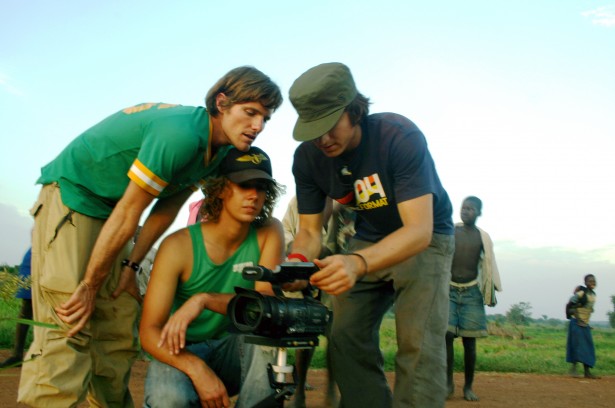
In 2003, Jason, Bobby, and Laren landed in the heart of Africa with second-hand cameras on their shoulders, itching for a story to tell. Now, ten years later, Invisible Children has created nearly a dozen documentaries and has reached well over 100 million people through its media. There are countless factors in the success of Invisible Children, but it’s safe to say that this type of phenomenon probably wouldn’t have been possible twenty years ago. In today’s tech-conscious culture, do-it-yourself filmmaking is on the rise, and documentaries are playing a vital role in the revolution.
In the late 1980s and early 90’s, when documentary filmmaking really began to take a foothold in culture, it was extremely difficult to get a project funded, and even harder to get the final product to the silver screen. Documentaries had a stigma of academia and dryness, and because of that, they were extremely hard to market. But with the explosion of the internet over the last decade, that stigma is quickly evaporating. In 1991, IMDB showed a listing of 1,860 documentary titles, compared to 2011 when that number increased dramatically to 16,886. DIY documentaries have replaced the once traditional newspaper series, in which a journalist would focus on one story or social issue for several days. While this type of journalism is still prevalent online, it’s rarely seen in print anymore.

Similarly, with the rise of Netflix and other streaming sites, documentaries are presented to a much wider audience and with more commercial appeal than print media and even traditional broadcasting. Before Netflix and its counterparts rose to influence, PBS’s POV was a prominent source for documentaries, showing nearly 300 films since its inception in 1988. As modern media advances, PBS is trying to keep up, and now offers many of these films through an online series with updated interviews with their filmmakers in an attempt to keep the films relevant.
In addition to the significant change in the way that people view these films, there has been an increased focus on the impact that documentaries leave on contemporary culture. In 2011, Harmony Institute did a study on “Waiting For Superman,” a film focusing on the education system in the U.S., and found that in the year of its release (2010) it grossed an estimated $6.4 million and cultivated 294,000 pledges from people vowing to see the film and to support education reform. This instance, along with countless others including KONY 2012, serves to show that a genre once reserved for academic settings and prominent film festivals is now an integral part of how our society learns, thinks, and reacts to social change. Understanding and utilizing the power of story is vital to the continued advancement of human rights, education reform, sustainable living, and other prominent issues affecting the world we live in.
In case your Netflix queue wasn’t already full enough, I took a consensus of favorite documentaries from people around the office, and came up with this list full of gems (of course, our true favorite KONY 2012, goes without saying):
Krista Morgan, Staff Writer: “Spellbound” and “Wordplay”
Azy Groth, Staff Writer: “Bill Cunningham New York“, “If a tree falls: A story of the Earth Liberation Front“, “Beautiful Losers”
Carl Stevens, Media Marketing Assistant: “180 Degrees South”
Alex Naser-Hall, Communications Assistant: “The September Issue”
(Photo credit: Melissa Martens)
Think people should hear about this?